CAT721 Specification
Unlike CAT20 tokens, CAT721 tokens cannot be divided into smaller units. Each token is unique and non-interchangeable, i.e., non-fungible. Each NFT stores full data on-chain immutably using Bitcoin transactions.
1. Deploy
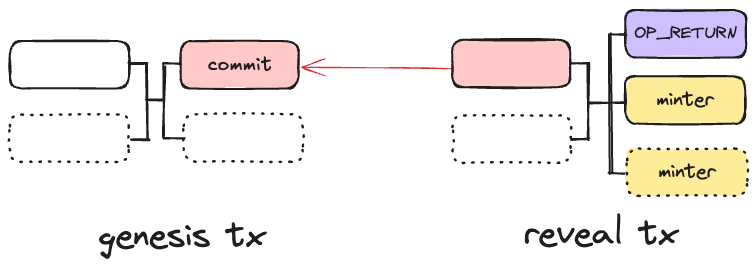
To mint any non-fungible token (NFT), a collection has to be deployed first. All NFTs descending from a genesis transaction fall under its collection. Provenance is on chain and enshrined in the protocol. It is publicly accessible by any party and does not rely on off-chain data.
Similar to CAT20, the collection information is embedded in a CAT envelope, but with a different tag.
OP_FALSE
OP_IF
OP_PUSH "cat"
OP_PUSH 2 // collection
OP_PUSH 5 // metadata tag
OP_PUSH <JSON> // CBOR encoded
OP_ENDIF
The JSON file contains collection-level metadata, which must at least contain the following:
{
"name": "lockedcat",
"symbol": "LockedCAT",
}
The collectionId is defined as the genesis commit outpoint txid_vout, same as CAT20 tokenId. The reveal transaction must follow the same rule as in CAT20.
Fields
An envelope may contain other fields. Each field is composed of a tag and a corresponding value. At present, the following tags have been defined:
- 0: content
- 1: MIME type of the content
- 5: metadata
- 9: encoding of the content
Royalties
Collection creator can optionally include royalty payment information in the metadata field, like
{
"receiver": "1A1zP1eP5QGefi2DMPTfTL5SLmv7DivfNa", // address of who should be sent the royalty payment
"royaltyPercent": "10", // the royalty payment amount as a percentage of sale price
}
The NFT marketplace ecosystem can voluntarily adopt a standardized royalty payment system shown above, which is NOT enforced on chain. This helps to establish a sustainable revenue stream for artists and content creators. Potential NFT buyers will likely consider the royalty structure as a significant factor in their decision-making process when purchasing.
2. Mint
Each individual NFT within a collection can be minted by spending a minter UTXO as in CAT20. The minter contract and the corresponding mint transaction must follow the same rules as in CAT20 mints, with two additional rules:
- There is one and only one envelope in its inputs. The envelope is associated with the freshly minted NFT in the output. It contains all the metadata of the NFT. This input is different from the input that spends a previous minter output.
- Each NFT must have a local ID unique within the collection.
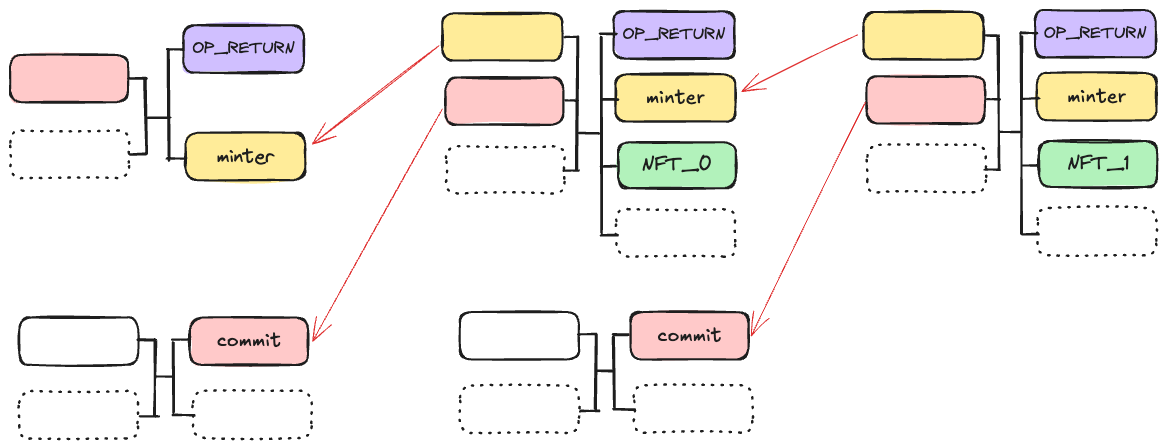
Each NFT is inscribed in an envelope similar to Ordinals with a different tag.
OP_FALSE
OP_IF
OP_PUSH "cat"
OP_PUSH 3 // NFT
OP_PUSH 0
OP_PUSH content
OP_ENDIF
Optional fields can be added before content, which is also optional.
Inscription is bound to a particular UTXO in CAT721, not a particular satoshi as in Ordinals.
Globally, each individual NFT will be referenced by a unique ID: collectionId:localId, i.e., txid_vout:localId. A CAT20/FT and CAT721/NFT output has the following contract state, respectively:
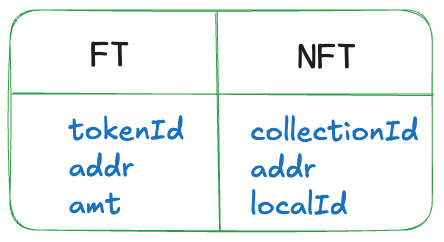
Same as in CAT20, arbitrary minting rules can be programmed and enforced in a CAT721 minting contract, such as open mint and limited supply.
Parallel mint
In a sequential and chained minting where concurrency N = 1, we can simply use the sequence number when an NFT is minted as its localId, e.g., NFT_0 and NFT_1. To reduce contention for a single UTXO when minting NFTs in a collection, concurrent minting is also allowed as in CAT20. We need to enforce unique localId in a collection where N > 1 to allow parallel minting.
Note minting transactions form a N-ary tree rooted at the reveal transaction. One way is to use Level Order Traversal (aka, Breadth First Search or BFS) to assign each transaction and thus NFT in it a unique ID, based on their order being visited. We traverse a tree in such a way that all nodes at the same level are visited completely before moving on to the nodes at the next level. The figure below shows how it works in a binary tree where N = 2.
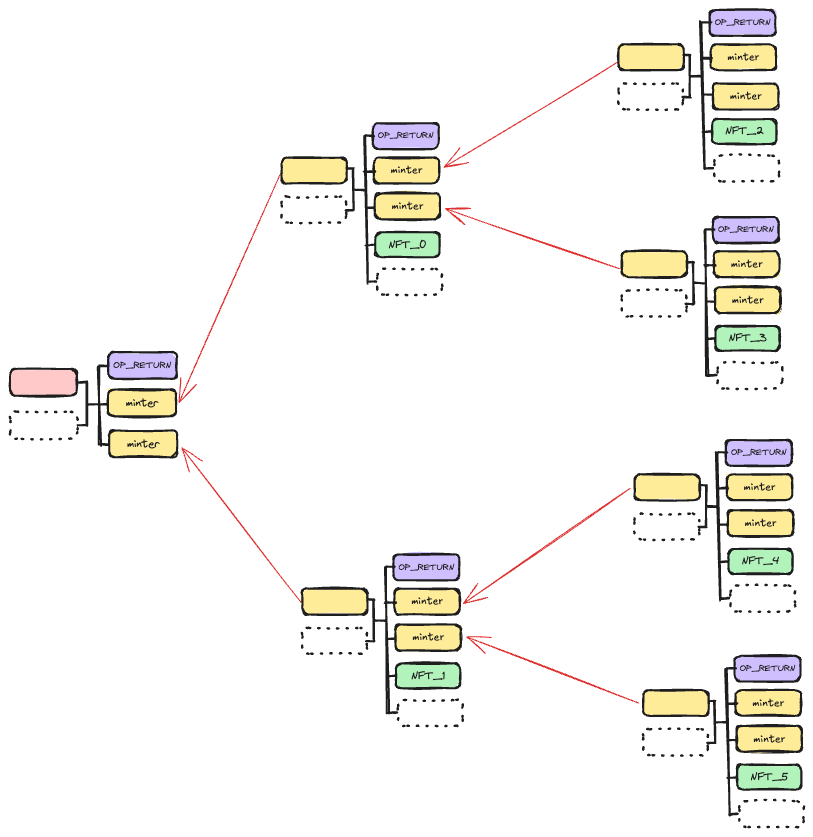
Note localId is for internal use only in the protocol. It may not be the sequence number an NFT is minted in a collection. For example, NFT_3 can be minted before NFT_1 above. In practice, applications may use a different ID when presenting the NFT to users, e.g., sequence number it is actually minted.
3. Transfer
An NFT can be transferred from an input to an output, i.e., from one UTXO to another. Only the owner address field of the state is updated.
Batch transfer
Multiple NFTs, in the same or different collections, can be transferred in a single transaction. The set of NFTs in the inputs must equate that in the outputs, regardless of ordering. The following example shows two NFTs transferred together.
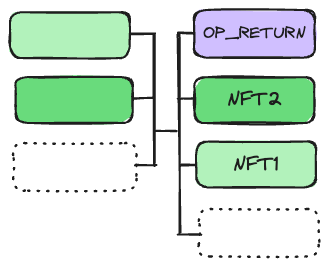
4. Burn
An NFT owner can destroy and burn it, permanently removing it from a collection. Multiple NFTs can be burned in a single transaction.